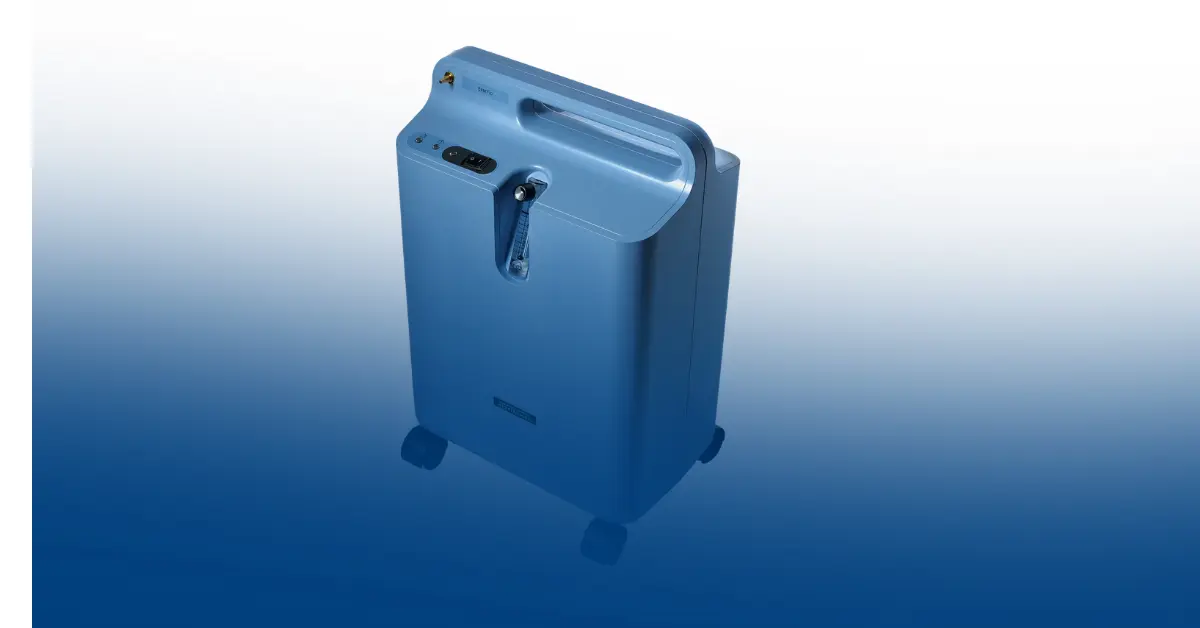Health
Low Calorie Fruits: A Complete Guide to Healthy and Refreshing Choices

When we talk about staying healthy and managing weight, one of the most common questions is: What are low calorie fruits and what do they offer? Simply put, low calorie fruits are those that provide essential vitamins, minerals, fiber, and hydration while keeping calorie intake low. They are excellent options for weight management, boosting energy, and improving overall health without loading the body with extra sugar or fat. These fruits not only satisfy sweet cravings naturally but also help in digestion, hydration, and disease prevention.
If you’re looking to eat smarter without giving up flavor, understanding low calorie fruits is a game-changer for your diet.
1. Background: Why Low Calorie Fruits Matter
The modern lifestyle has made calorie counting and health-conscious eating more important than ever. With processed foods dominating many diets, obesity and metabolic issues are on the rise. Low calorie fruits offer a natural solution by providing high nutrient density with fewer calories. Unlike snacks that leave you craving more, fruits keep you fuller for longer due to their fiber and water content.
2. Key Features of Low Calorie Fruits
Here are the defining features of low calorie fruits:
-
Low energy density (fewer calories per gram)
-
Rich in vitamins like C, A, and B-complex
-
High fiber content for better digestion
-
Natural antioxidants for immunity and skin health
-
Hydration support with high water content
-
Naturally sweet without added sugars
3. Detailed Explanations of Popular Low Calorie Fruits
Apples
-
Calories: ~52 per 100g
Apples are rich in dietary fiber and vitamin C. They make an excellent snack that keeps you full and improves gut health.
Berries (Strawberries, Blueberries, Raspberries)
-
Calories: 30–57 per 100g
Berries are antioxidant powerhouses. They help with skin rejuvenation, immunity, and brain health while staying low in calories.
Watermelon
-
Calories: ~30 per 100g
Made up of over 90% water, watermelon is perfect for hydration and cooling in hot weather.
Grapefruit
-
Calories: ~42 per 100g
Known for aiding weight loss, grapefruit boosts metabolism and supports heart health.
Kiwi
-
Calories: ~41 per 100g
Kiwi is rich in vitamin C and potassium, improving digestion and immunity.
Papaya
-
Calories: ~43 per 100g
Papaya supports digestion with papain enzyme and promotes glowing skin.
Oranges
-
Calories: ~47 per 100g
Packed with vitamin C, oranges are great for hydration, energy, and immunity.
4. Comparison: Low Calorie Fruits vs. High Calorie Fruits
| Aspect | Low Calorie Fruits | High Calorie Fruits |
|---|---|---|
| Calories (per 100g) | 30–60 | 80–200+ |
| Examples | Apple, Watermelon, Berries | Banana, Mango, Avocado |
| Weight Loss Suitability | Excellent | Limited |
| Sugar Content | Moderate to low | Higher |
| Hydration | High | Moderate |
5. Benefits for Different Types of Users
-
Weight watchers: Low calorie intake while staying full
-
Athletes: Quick energy without heavy sugar spikes
-
Office workers: Healthy snacking during long work hours
-
Children: Nutritious replacement for candies
-
Elderly: Easy-to-digest, vitamin-rich food option
6. Nutrition, Security, and Reliability Aspects
Low calorie fruits are naturally safe, but selecting organic or pesticide-free options enhances their nutritional reliability. Washing fruits properly reduces harmful residues. They are dependable sources of daily nutrition without the risks associated with processed snacks.
7. Future Trends in Healthy Eating with Fruits
With the rise of plant-based diets and clean eating, low calorie fruits are becoming a staple in weight-loss programs, detox plans, and even personalized nutrition apps. Expect to see more fruit-based meal replacements and smoothies in the future health industry.
8. Cost and Accessibility of Low Calorie Fruits
The cost of fruits depends on seasonality and location. However, most low calorie fruits like apples, oranges, and watermelon are affordable and widely available. Exotic fruits like kiwi or berries may cost more but are still accessible through supermarkets and online grocery platforms.
9. Pros and Cons of Choosing Low Calorie Fruits
Pros:
-
Low in calories, high in nutrients
-
Aid in weight management
-
Natural sweetness satisfies cravings
-
Improve hydration and digestion
Cons:
-
Some fruits (like berries or kiwi) can be costly
-
Seasonal availability may limit choices
-
Overeating can still lead to sugar intake issues
10. Conclusion: Are Low Calorie Fruits Worth It?
Absolutely! Low calorie fruits strike the perfect balance between nutrition, taste, and calorie control. Whether you’re aiming to lose weight, improve energy, or simply eat cleaner, incorporating these fruits into your diet is a smart choice. They’re affordable, refreshing, and accessible, making them worth every bite.
11. FAQs about Low Calorie Fruits
Q1: What fruit has the lowest calories?
Watermelon and strawberries are among the lowest, with around 30 calories per 100g.
Q2: Can I eat low calorie fruits daily?
Yes, daily consumption is recommended for balanced nutrition.
Q3: Are bananas considered low calorie fruits?
No, bananas are higher in calories (~89 per 100g) compared to typical low calorie fruits.
Q4: Do low calorie fruits help with weight loss?
Yes, their fiber and water content make them excellent for weight management.
Q5: Are frozen fruits as healthy as fresh ones?
Yes, frozen fruits retain most nutrients, but avoid options with added sugar.
Q6: Can diabetics eat low calorie fruits?
Yes, but they should monitor portion sizes and focus on lower-sugar fruits like berries and apples.
Health
EverFlo Oxygen Concentrator: Efficient Home Oxygen System

Table of Contents
Introduction
The EverFlo Oxygen Concentrator has earned a strong reputation as one of the most efficient and user-friendly home oxygen therapy devices on the market. Manufactured by Philips Respironics, it’s designed to offer patients consistent oxygen flow while minimizing noise, energy consumption, and maintenance needs.
If you’re seeking a compact, dependable, and affordable oxygen solution, the EverFlo Oxygen Concentrator stands out for its simplicity and long-term reliability.
What Is the EverFlo Oxygen Concentrator?
The EverFlo Oxygen Concentrator is a stationary medical device that separates oxygen from ambient air and delivers high-purity oxygen to patients with respiratory conditions such as COPD (Chronic Obstructive Pulmonary Disease), asthma, or emphysema.
For a guide on nvacare Oxygen Concentrator click here
Unlike oxygen cylinders, it does not require refills. Instead, it extracts oxygen from the air continuously, providing an unlimited supply as long as it’s powered on. This makes the EverFlo model both cost-effective and low-maintenance for patients relying on home oxygen therapy.
Key Features of EverFlo Oxygen Concentrator
Philips designed the EverFlo Oxygen Concentrator to meet modern healthcare standards while keeping it simple and easy for home users. Here are its standout features:
- Compact and Lightweight: Weighs only 31 pounds, making it easy to move.
- Quiet Operation: Noise levels are below 45 decibels for peaceful sleep and comfort.
- Energy Efficient: Consumes only about 350 watts, reducing electricity costs.
- High Oxygen Purity: Provides 93% ±3% oxygen concentration for safe therapy.
- Durable Design: Long-life filters reduce the need for frequent servicing.
- Integrated Humidifier Bottle Holder: Adds comfort for patients needing moist oxygen.
Each feature of the EverFlo Oxygen Concentrator reflects Philips’ focus on comfort, reliability, and sustainability in home oxygen delivery.
How Does the EverFlo Oxygen Concentrator Work?
The EverFlo Oxygen Concentrator uses Pressure Swing Adsorption (PSA) technology to filter nitrogen and deliver purified oxygen. Here’s a simple explanation of the process:
- Air Intake: The device draws room air through its filter system.
- Filtration: Dust and particles are removed for cleaner air.
- Nitrogen Separation: Using zeolite sieve beds, nitrogen is separated from oxygen.
- Oxygen Delivery: Pure oxygen is delivered to the user through a nasal cannula.
The system ensures a steady supply of medical-grade oxygen without the need for cylinder replacements — one of the major advantages of the EverFlo Oxygen Concentrator.
Benefits of Using the EverFlo Oxygen Concentrator
Using the EverFlo Oxygen Concentrator comes with numerous benefits that enhance both patient comfort and quality of life:
- Low Maintenance: No filter changes for up to two years.
- Reduced Operating Costs: Energy-efficient design saves on monthly bills.
- Portable for Home Use: Easy to move from one room to another.
- Quiet Functioning: Ideal for use during sleep or while watching TV.
- Environmentally Friendly: No cylinder refills or transport emissions.
These advantages make the EverFlo Oxygen Concentrator a preferred choice for patients who value convenience and reliability in long-term oxygen therapy.
EverFlo vs. Other Oxygen Concentrators
When compared to other home oxygen systems, the EverFlo Oxygen Concentrator has several competitive advantages:
| Feature | EverFlo | Invacare | AirSep VisionAire |
|---|---|---|---|
| Weight | 31 lbs | 43 lbs | 30 lbs |
| Power Consumption | 350W | 410W | 290W |
| Noise Level | <45 dB | 50 dB | 45 dB |
| Maintenance | Low | Moderate | Moderate |
| Warranty | 3 years | 3 years | 2 years |
This comparison highlights that the EverFlo Oxygen Concentrator provides an excellent balance of lightweight design, efficiency, and quiet operation, making it ideal for most home-based patients.
Maintenance and Safety Tips
To ensure long-term performance, users should follow these maintenance and safety tips for their EverFlo Oxygen Concentrator:
- Keep the device away from walls to maintain airflow.
- Replace or clean filters as recommended.
- Avoid smoking or open flames near the unit.
- Use distilled water in the humidifier bottle.
- Schedule professional service every 12 months.
Routine maintenance not only extends the device lifespan but also guarantees consistent oxygen purity and safe operation.

Where to Buy the EverFlo Oxygen Concentrator
You can purchase the EverFlo Oxygen Concentrator through several trusted medical suppliers and online platforms such as:
- Philips Respironics Authorized Dealers
- RehabMart
- Vitality Medical
- Medical Supply Depot
- Amazon (with verified medical sellers)
Always ensure you’re buying from a certified dealer to receive warranty support and genuine parts.
Customer Reviews and Expert Insights
Healthcare professionals praise the EverFlo Oxygen Concentrator for its reliability, simplicity, and minimal upkeep. Patients often highlight its:
- Low noise output
- Compact design
- Energy savings
- Continuous oxygen flow
Experts also note that Philips’ use of long-lasting filters and durable internal components contributes to fewer breakdowns, which is especially valuable for patients needing 24-hour oxygen therapy.
Technical Specifications
| Specification | Details |
|---|---|
| Oxygen Flow | Up to 5 LPM |
| Oxygen Concentration | 93% ±3% |
| Power Consumption | 350W |
| Sound Level | ≤45 dB |
| Weight | 14 kg (31 lbs) |
| Dimensions | 23” H x 15” W x 9.5” D |
| Warranty | 3 years |
These specifications show why the EverFlo Oxygen Concentrator is among the most efficient and quiet oxygen systems for residential use.
Frequently Asked Questions (FAQs)
1. How long can I run the EverFlo Oxygen Concentrator?
The EverFlo Oxygen Concentrator is designed for continuous use and can operate 24/7 with proper ventilation.
2. Does it require distilled water?
Yes, if using the humidifier attachment, always fill it with distilled water to avoid mineral buildup.
3. Is it noisy?
No, it operates below 45 decibels—quieter than most home concentrators.
4. How often should I service it?
It requires professional service once a year or as recommended by Philips.
5. Can I travel with this device?
The EverFlo Oxygen Concentrator is a stationary model, not portable, but easy to move around your home.
Conclusion
The EverFlo Oxygen Concentrator by Philips Respironics represents a perfect blend of performance, reliability, and user comfort. Its low maintenance design, quiet operation, and energy efficiency make it one of the best home oxygen therapy systems available today.
For patients who need continuous oxygen support without constant cylinder replacements, the EverFlo Oxygen Concentrator is a dependable, cost-effective, and long-lasting solution.
Health
Invacare Oxygen Concentrator: Reliable Home Oxygen Solution

Table of Contents
Introduction
When it comes to home oxygen therapy, few names are as trusted as the Invacare Oxygen Concentrator. Designed with advanced technology and patient comfort in mind, Invacare has established itself as a global leader in respiratory care equipment. This article explores how Invacare’s devices deliver reliability, efficiency, and value for patients requiring continuous oxygen therapy.
What Is an Invacare Oxygen Concentrator?
An Invacare Oxygen Concentrator is a medical device that extracts oxygen from the surrounding air and delivers it to users with respiratory conditions like COPD, emphysema, or chronic bronchitis. Unlike oxygen tanks that require frequent refills, concentrators provide an endless oxygen supply as long as they remain plugged in.
Invacare’s models are engineered to offer quiet operation, energy efficiency, and enhanced mobility—making them a top choice for both home and clinical environments.
Key Features of Invacare Oxygen Concentrators
Invacare offers multiple models such as the Invacare Perfecto2 V and Invacare Platinum 10, each packed with innovative features. Some key highlights include:
- Continuous Flow Oxygen: Provides consistent oxygen output up to 10 liters per minute.
- Low Noise Operation: Advanced compressor design minimizes sound for peaceful home use.
- Energy Efficient: Uses minimal power, reducing electricity costs.
- Easy Maintenance: Designed for user-friendly filter replacement and cleaning.
- Built-In Alarms: Alerts for low oxygen purity, high temperature, or power issues.
Each feature of the Invacare Oxygen Concentrator aims to make long-term oxygen therapy safer and more comfortable.
How Does the Invacare Oxygen Concentrator Work?
The device works through Pressure Swing Adsorption (PSA) technology, separating nitrogen from ambient air and delivering oxygen-enriched air through a nasal cannula or mask. The Invacare Oxygen Concentrator continuously monitors oxygen purity to ensure optimal performance.
Here’s a simplified breakdown:
- Air Intake: The unit draws in surrounding air.
- Filtration: Removes dust and impurities.
- Oxygen Separation: Nitrogen is filtered out using zeolite sieve beds.
- Delivery: Pure oxygen is supplied to the user through tubing.
This self-sustaining system ensures patients receive high-purity oxygen without refilling tanks or cylinders.
Top Invacare Oxygen Concentrator Models
1. Invacare Perfecto2 V
- Compact, lightweight design
- Delivers up to 5 LPM (liters per minute)
- Energy Star rated for efficiency
- Ideal for home users needing moderate oxygen support
2. Invacare Platinum 10
- Heavy-duty concentrator with up to 10 LPM output
- Features top-grade filtration and durability
- Suitable for hospitals or patients requiring higher oxygen flow
Both models reflect Invacare’s commitment to combining medical-grade performance with user-friendly functionality.
Benefits of Using an Invacare Oxygen Concentrator
Using an Invacare Oxygen Concentrator offers several life-enhancing advantages:
- Reliable Oxygen Supply: Eliminates the need for cylinder refills.
- Cost-Effective: Reduces long-term expenses compared to oxygen tanks.
- Mobility Options: Compatible with portable oxygen devices.
- Enhanced Safety: Built-in sensors ensure purity and performance.
- Eco-Friendly: Uses air instead of disposable cylinders.
These benefits make Invacare devices a preferred choice among patients, caregivers, and healthcare professionals alike.
Maintenance and Safety Tips
To ensure your Invacare Oxygen Concentrator performs at its best:
- Clean or replace filters regularly (as per the manual).
- Keep the unit in a well-ventilated area.
- Avoid placing it near open flames or smoke.
- Check tubing for leaks or kinks.
- Schedule annual service by an authorized technician.
Routine care extends device lifespan and ensures uninterrupted oxygen therapy.
Where to Buy Invacare Oxygen Concentrators
You can purchase the Invacare Oxygen Concentrator through:
- Authorized dealers listed on the Invacare official website.
- Medical supply retailers such as Rehabmart and Vitality Medical.
- Healthcare providers who supply equipment through insurance programs.
Always verify the product authenticity and warranty when purchasing online or through third-party sellers.

Customer Reviews and Expert Insights
Patients praise the Invacare Oxygen Concentrator for its:
- Long lifespan
- Quiet operation
- Easy maintenance
- Reliable oxygen output
Respiratory therapists often recommend Invacare due to its stable performance and FDA-approved safety standards. These factors contribute to its reputation as a hospital-grade product trusted for home use.
Frequently Asked Questions (FAQs)
1. How long does an Invacare Oxygen Concentrator last?
Most models last between 5–7 years with proper maintenance and care.
2. Can I travel with an Invacare Oxygen Concentrator?
Yes. Invacare offers portable concentrators designed for travel, complete with rechargeable batteries.
3. How often should I service my concentrator?
It’s recommended to get the device professionally serviced once a year for optimal performance.
4. Does it work during power outages?
You’ll need a backup oxygen source or an uninterruptible power supply (UPS) to ensure continuous use.
5. Is it covered by insurance?
Many healthcare insurance plans cover Invacare Oxygen Concentrators when prescribed by a physician.
Conclusion
The Invacare Oxygen Concentrator stands out as a reliable, efficient, and medically certified oxygen therapy solution for patients needing consistent respiratory support. Whether you choose the Perfecto2 V for home use or the Platinum 10 for clinical settings, Invacare ensures superior performance, safety, and peace of mind.
By combining advanced technology with user comfort, the Invacare Oxygen Concentrator continues to redefine what home oxygen therapy can be — a seamless, secure, and life-improving experience.
Health
Transforming Mental Health: TMS Treatment APN for Lasting Recovery

Introduction
TMS Treatment APN is reshaping the way people approach mental health recovery. Short for Transcranial Magnetic Stimulation administered by Advanced Practice Nurses (APNs), this treatment provides a safe, drug-free option for individuals struggling with conditions like depression, anxiety, and other mental health disorders. Unlike traditional therapies that may rely heavily on medication, TMS Treatment APN uses magnetic pulses to stimulate brain activity, offering hope to those who haven’t found relief through standard approaches.
In this article, we’ll break down what TMS Treatment APN is, how it works, its benefits, risks, effectiveness, and what you should know before considering it as a treatment option.
1. What Is TMS Treatment APN?
TMS Treatment APN refers to Transcranial Magnetic Stimulation therapy delivered under the care of Advanced Practice Nurses (APNs). It’s a non-invasive, FDA-cleared therapy that targets specific areas of the brain responsible for mood regulation.
APNs play a critical role in modern mental health care by providing patient-centered, evidence-based treatment. When combined with TMS, their expertise ensures not only technical precision but also personalized support.
More Article Here
2. How Does TMS Treatment APN Work?
TMS involves placing a magnetic coil near the patient’s scalp. This device delivers gentle magnetic pulses that stimulate underactive brain cells, encouraging healthier neural activity. Over time, this process helps regulate mood and reduce symptoms of depression or anxiety.
Sessions typically last between 20 to 40 minutes, and patients can resume daily activities immediately afterward.
3. Conditions Treated with TMS
While TMS is best known for treating depression, research shows it may also help with:
-
Anxiety disorders
-
Post-traumatic stress disorder (PTSD)
-
Obsessive-compulsive disorder (OCD)
-
Chronic pain conditions
-
Bipolar depression (in certain cases)
4. Why Choose APN-led TMS Treatment?
APNs bring advanced clinical training, holistic care, and personalized monitoring to TMS therapy. Their approach balances medical science with compassionate support, creating a safe and patient-friendly environment.
5. Benefits of TMS Treatment APN
-
Non-invasive: No surgery or anesthesia required.
-
Drug-free: Ideal for patients who don’t tolerate medication side effects.
-
Minimal downtime: Patients can continue normal activities right after sessions.
-
Proven effectiveness: Especially for treatment-resistant depression.
-
Personalized care: Tailored by skilled APNs to meet individual needs.
6. Comparison: TMS vs. Traditional Therapies
| Feature | TMS Treatment APN | Traditional Therapies (Medication/Talk Therapy) |
|---|---|---|
| Invasiveness | Non-invasive | Medication side effects or invasive treatments |
| Effectiveness in Resistant Cases | High | Often limited |
| Side Effects | Mild headaches, scalp discomfort | Weight gain, fatigue, dependency |
| Recovery Time | Immediate return to activities | Adjustment period required |
| Personalization | Tailored by APNs | Varies by provider |
7. Who Is a Candidate for TMS Treatment APN?
TMS is suitable for adults who:
-
Struggle with major depressive disorder or anxiety
-
Have not responded well to medication or therapy
-
Prefer a drug-free approach
-
Are medically cleared for non-invasive brain stimulation
8. Treatment Process: Step-by-Step
-
Initial Consultation: APN reviews medical and psychiatric history.
-
Mapping Session: Coil placement is adjusted for targeted stimulation.
-
Treatment Sessions: Daily sessions over 4–6 weeks.
-
Monitoring Progress: APN evaluates improvements and adjusts treatment.
-
Maintenance (if needed): Follow-up sessions to sustain results.
9. Possible Side Effects and Risks
Most patients tolerate TMS well, but mild side effects can include:
-
Headaches
-
Scalp discomfort
-
Tingling sensations
-
Temporary dizziness
Serious risks are extremely rare, making TMS safer than many other interventions.
10. How Long Do Results Last?
Many patients experience long-term relief after completing a treatment course. While some may need booster sessions, improvements often last months or even years, depending on individual response.
11. Cost and Accessibility of TMS Treatment APN
The cost varies depending on location, provider expertise, and insurance coverage. While it can be more expensive upfront than medication, its long-term effectiveness often reduces overall healthcare expenses.
12. Role of APNs in Mental Health Innovation
Advanced Practice Nurses bridge the gap between medical expertise and personalized care. By leading TMS treatment, they ensure patients receive safe, compassionate, and innovative support throughout their healing journey.
13. Patient Experiences and Outcomes
Patients often report:
-
Noticeable mood improvements
-
Enhanced focus and productivity
-
Better sleep patterns
-
Renewed motivation and energy
14. Common Myths About TMS Treatment APN
-
Myth: TMS is painful.
Fact: The pulses cause mild tapping sensations, not pain. -
Myth: TMS causes memory loss.
Fact: Unlike ECT, TMS does not impair memory. -
Myth: Only psychiatrists can perform TMS.
Fact: Skilled APNs are fully qualified to deliver TMS therapy safely.
15. Future of TMS in Mental Health Care
With ongoing research, TMS is expected to expand into treatments for dementia, stroke recovery, and even addiction. The combination of APN-led care and advanced technology will continue to transform mental health outcomes.
16. FAQs
Q1. Is TMS Treatment APN safe?
Yes, it is FDA-cleared, non-invasive, and has minimal side effects.
Q2. How many sessions are needed?
Typically, 20–30 sessions over 4–6 weeks are required.
Q3. Can TMS replace medication?
For some patients, yes. Others may still combine it with medication for optimal results.
Q4. Does insurance cover TMS Treatment APN?
Coverage varies, but many providers now include TMS in mental health benefits.
Q5. How soon can I expect results?
Some patients notice improvements within 2 weeks, while others take longer.
Conclusion
TMS Treatment APN is a groundbreaking approach to mental health recovery. By combining advanced brain stimulation technology with the expertise of Advanced Practice Nurses, patients gain access to safe, effective, and personalized care. Whether you’re seeking relief from depression, anxiety, or other mental health challenges, TMS Treatment APN offers a promising path toward long-term well-being and resilience.
-

 Must Read5 months ago
Must Read5 months agoThe Truth Behind the Direct Fairways Lawsuit: What You Need to Know
-

 Business5 months ago
Business5 months agoTop Chartered Accountants Benefits: Guide, Tips, FAQs & More
-

 Tech5 months ago
Tech5 months agoblogsternation .com: Complete Beginner’s Guide, Benefits, and FAQs
-

 Tech3 months ago
Tech3 months agoHow to Upgrade Graphics Driver: Boost Speed, Fix Issues & Enhance Gaming
-

 Sports5 months ago
Sports5 months agoHow Many Quarters in Football? A Complete Guide to Game Structure and Timing
-

 Education5 months ago
Education5 months agoOxford Acceptance Rate: What It Means, Why It Matters, and How to Beat It
-

 Business5 months ago
Business5 months agoUnlocking the Truth About gomyfinance.com Credit Score
-

 Must Read5 months ago
Must Read5 months agoEscalade Must Have Accessories for the Ultimate Cadillac Experience





















